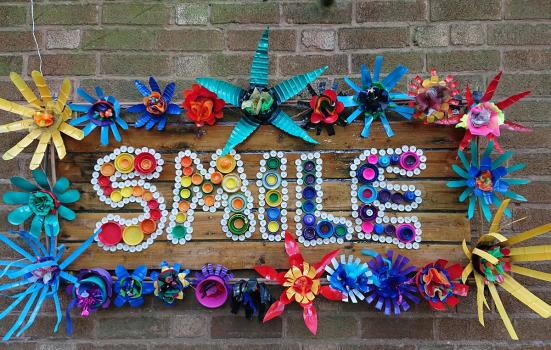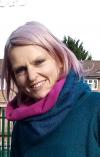Sophie Handy shares her experience of a civic arts programme with a genuine grassroots approach to local development in the hands of community organisations, local movers and makers, doers and growers.

Working together to develop ideas, to get things happening on the ground, to involve people, inspire people, talk to people, adapt and evolve together and collectively to be the changes you want to see. This is the essence of the national Creative Civic Change (CCC) programme, a partnership between Birchfield and Welsh House Farm in Birmingham, with Big Local Trust and Birmingham Repertory Theatre.
My artist residency at Welsh House Farm began with lockdown. CCC’s response was to introduce me to a group of professional artists in the same situation working on the same project so collectively we could find a way to continue the project. We grappled with how to reach out and connect with the wider communities we were hoping engage. It quickly became clear that the need for creative purpose was primal and the more resourceful we could be, the greater the value we could offer.
With a range of skills between us, we started a series of themed art packs. The first, “Paper”, included some basic art materials though the “Creative Gift” was the main offer: an invitation to play and experiment, a prompt to use this shared gift of time at home, creatively and purposefully. Faith Pearson with her wonderful illustrations, created a page with a million things you can do with a piece of paper; Kate Luxmoore, a professional musician, provided ideas on making music and beats with things at home.
Inspiring and encouraging creativity
I chose paper mâché which, as a very hands-on craft, was challenging to demonstrate techniques on a single page. It was a new way of working for all of us and I was really pleased with the outcome of my 3D mâché page and with my later pages for the following “Nature” pack. Although each artist created their own personal interventions, each pack was a carefully thought-out collaboration, assembled and received as one.
The art packs went out to local families via foodbanks so it was important to keep them as simple and accessible as possible, aiming to inspire and encourage creativity without being too prescriptive, and with an emphasis on making things together as a family.
As the schools started back, we started moving again, meeting people face-to-face and getting our hands in the local soil. Meeting places were limited under the restrictions, but common ground was found at Rutley Grove Community Gardens, a piece of land that had recently been reclaimed by the Big Local.
Its colourful signage and beautiful landscaping caught my eye as a loved and appreciated asset. That and the wonderful people I met on my tour of the estate, the movers and doers of The Big Local and the growers and food sharers. With a booming global emphasis on gardening and growing and cooking, and being allowed to meet and work outside, everything was slotting into place.
Tapping into the creativity of schoolchildren
Welsh House Farm Community School were keen to get involved in this creative project benefitting the community and giving the pupils the opportunity to contribute. Talking to the children and finding out what was important to them, we hatched a plan to grow our own pizza. We learned about where our food comes from and what we can grow ourselves.
In October we planted our “River of Wheat” at the community garden. There were some teething problems with hungry squirrels and irregular weather, but we sowed the seeds and we will harvest what we can. We now plan to build an earth oven to cook and share our pizza.
The children highlighted the importance of recycling and responsible disposal of rubbish. In response, we constructed a SMILE sign out of plastic bottles and lids to both encourage and cheer local residents. We also made scarecrows and wind chimes out of recycled materials to protect our crops. At the gardens, down by the river and on the SMILE sign we have installed solar lights. As the skies darken they are a symbol of the light, love and energy growing in our local soil.
Every stage of the project has revealed a further unfurling of potential. The basic needs of creativity, survival and recognising what's important have allowed the project to move at its own pace. These unprecedented times have enabled a genuine ebb and flow of dialogue and progress. Everything has felt very organic and authentic.
Without doubt, the best thing to have emerged from the project has been the continued dialogue and support from the whole partnership. As a freelance artist, long-term contracts are pretty rare so I have appreciated more than ever the regular contact, the team working and the opportunity to get to know people and what matters to them. This Creative Civic Change programme recognises how precious space and time is for nurturing ideas that make a difference: that's when the magic happens.
Sophie Handy is Artist in Residence at Welsh House Farm
![]() sophiehandy.com
sophiehandy.com




